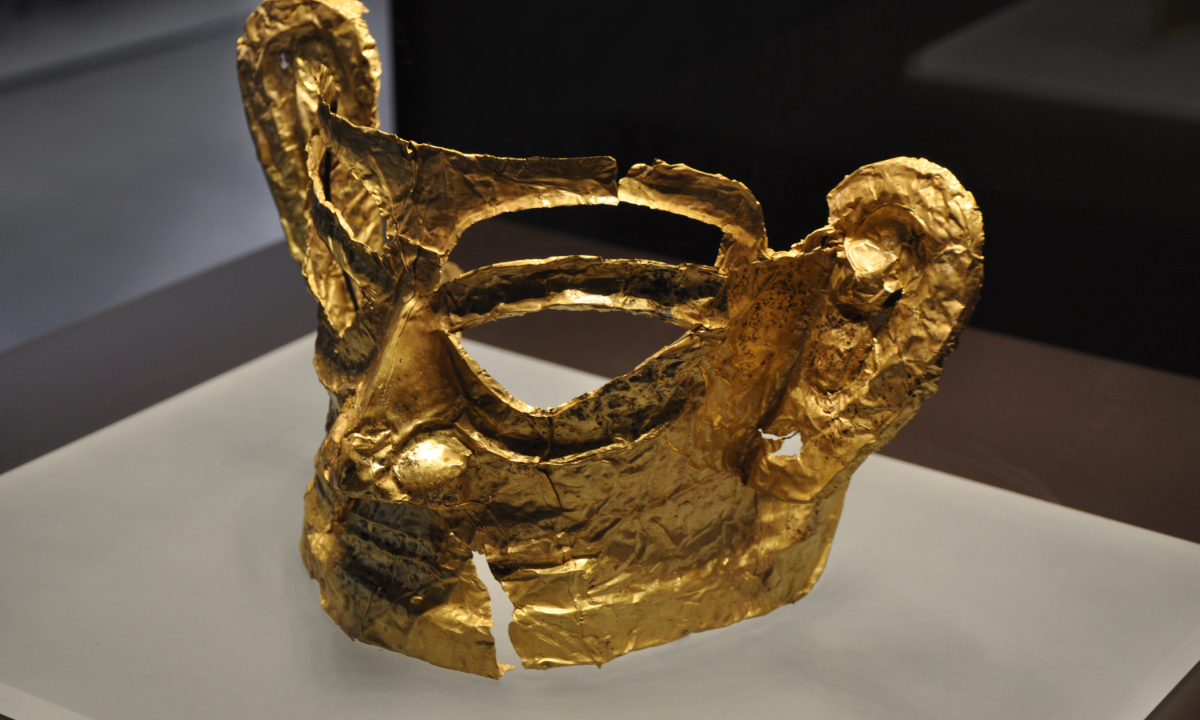
A golden mask from the Sanxingdui Ruins Photo: VCG
A report that addresses the current development of China's 55 National Archaeological Site Parks (NASP) recently revealed that these sites have welcomed "146 million visitors."
Introduced by China's National Cultural Heritage Administration, the report concluded the achievements of China's 55 NASP from 2018 to 2022.
An NASP refers to a venue that has established a public park around a central archaeological site, cultural researcher Xu Shuming told the Global Times.
Li Qun, the head of China's National Cultural Heritage Administration, told the Global Times that the NASP program is China's way of achieving scientific protection, rational utilization, and revitalization of cultural relics at large archaeological sites. The 55 parks were built around notable archaeological spots like the Mausoleum of Emperor Qin Shihuang and the Zhoukoudian Site in Beijing, which is known for the discovery of Homo erectus pekinensis (Peking Man).
Visitor numbers at these parks reached 146 million over four years of time.
World famous sites such as the Bronze Age Sanxingdui site in Sichuan Province and the Erlitou culture, one of the major subjects of the Project to Trace the Origins of Chinese Civilization, have facilities that have been updated to better carry out NASP's "protect while exhibiting" function, cultural sociologist Chu Xin, told the Global Times.
Chu explained to the Global Times that NASP are unlike public cultural parks or natural scenic areas and should been seen as a "combination of archaeological research, cultural tourism and public education."
Archaeological workstations dedicated to on-site research have been constructed at 42 parks, with a total of 465 research projects and 633 academic activities being carried out.
More than 4,700 cultural activities have also been held at these parks. To better provide public services, over 30 NASP have established operating agencies with more than 2,400 volunteers standing by to guide visitors.
The report revealed that over the past four years, several sites such as the Yinxu Ruins, an ancient Shang (c.1600BC-1046BC) capital city site, and the Shimao Site, once a center of Northern China during the early Xia Dynasty (c.2070BC-c.1600BC), have been listed as the country's top 10 national discoveries.
China's NASP should be developed further to "ensure the authenticity, integrity and cultural continuity of the relics at NASP," Li told the Global Times.
He added that "enhancing the quality of displays and promoting a park's importance" were also important parts of the future development of NASP.
The report also revealed that 19 new sites have been selected to become China's fourth batch of NASP. Sites such as Hubei's Qujialing Ruins and Nihewan Site in Hebei Province have all been included on the list.
"We aim to make the spiritual characteristics and cultural heritage of Chinese civilization more tangible, accessible and approachable," Li noted.
URL: https://www.seeglobalnews.com/read-1348.html